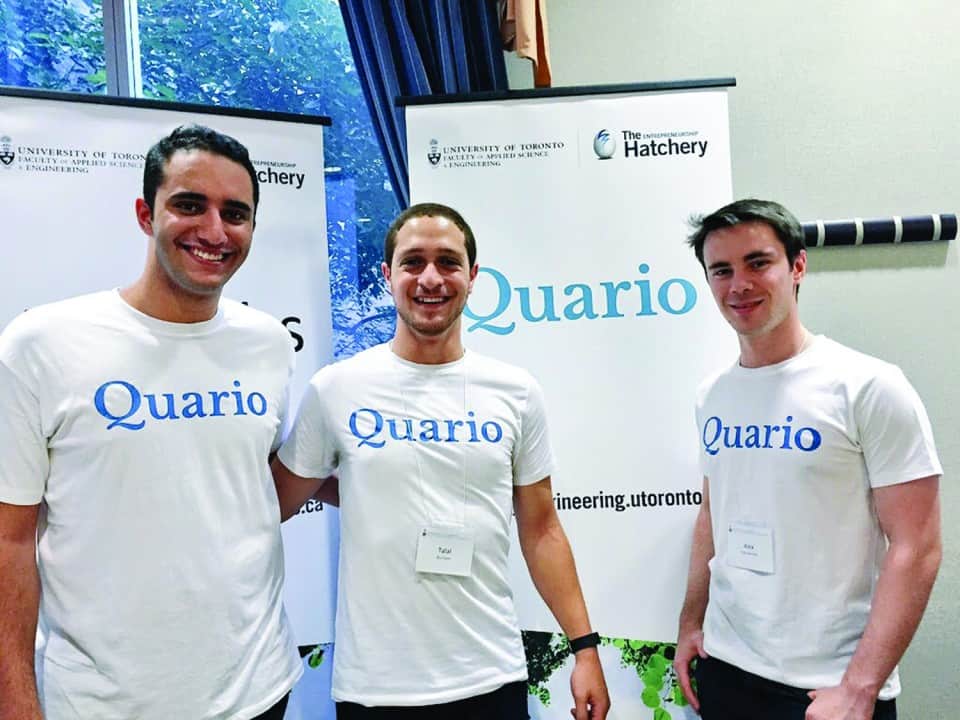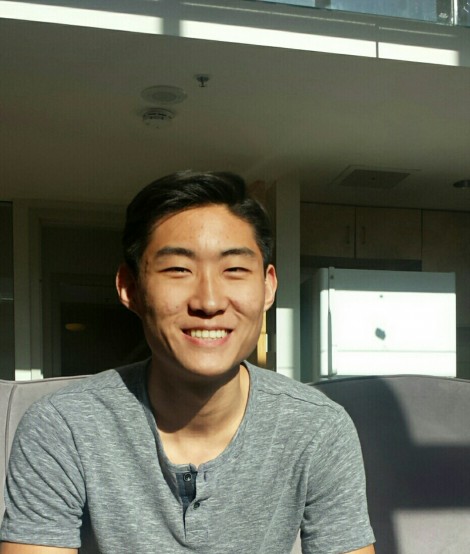Not an innovation hub?
The University of Toronto is a world class institution, with university rankings perpetually confirming that it is Canada’s best university, and is among the upper echelons of global post-secondary schools.
But, for all its prestige, U of T is not known as a technology hub, with schools like Cal Tech, Stanford, MIT and the Canadian standout, University of Waterloo, routinely outpacing it in technological prowess. Sure, our Computer Science program is ranked 11th in the world according to the the Academic Ranking of World Universities, but when it comes to the word “innovation”, U of T does not immediately come to mind.
Despite this impression, however, there is in fact plenty of tech talent at U of T. Students are developing apps that have the potential to change our everyday lives.
Today, apps are ubiquitous and relied upon by a generation seeking to make their lives simpler with the press of a button.
After scouring campus for talented app developers, I believe it’s quite possible that some of the future’s digital tastemakers will have gone to U of T. These people could lead the way — placing U of T in the academic digerati.
Charting a new path
One of U of T’s young app developers is David Han, a second-year computer science student who spent his summer working at Weebly, a web-hosting company, in San Francisco.
Han, who taught himself how to code, had a somewhat rocky start to his U of T experience. He spent Frosh Week sleeping on a mattress with a towel as his blanket -— he had arrived from Vancouver just in time for the festivities — and was unsuccessful in his election campaign to be a UCLit representative.
Since things were not going as planned for Han in terms of extra-curriculars, he instead spent his time refining his craft, and came up with an idea for an app, which would allow users to connect with others on various social media platforms simultaneously, Han says this tool is especially useful at parties.
And so, Han developed “Quink,” an app that does just that. According to Han, user experience (UX) and user interface (UI) are the most important qualities in an app, and he prides himself on making them a priority for his work.
A cohort of talent
Han is not an anomaly at U of T. Many of his peers are also turning ideas into innovation.
When you need a distraction from work: Secret projects
Jeffrey Deng, a third year computer science student, works part-time at Plastic Mobile where he toils over apps for companies like Pizza Pizza and Shoppers Drug Mart. Outside of work, he has interests in gaming and photography, and is currently working on a “secret” project with another U of T student. His most recent independent project is called “What’s New,” which aggregates social media feeds from Facebook, Instagram, Twitter and Tumblr onto one timeline.
When you are organizing classes (even if you don’t plan on attending): Courseography
Christine Murad, a 4th year student studying computer science and sociology, created her first app in CSC207, Software Design. She created a nurse triage platform meant to allow health professionals to easily access patient information.
Now Murad is part of the team of U of T students who are responsible for Courseography. According to Murad, the team is solving a practical and very common student problem: course management. The web application helps students create timetables and plan their degrees, with a graphing feature that allows users to chart their progress. Like Han, Murad considers UI a key ingredient to a great app, while also highlighting the importance that the app considers its target audience and caters to its needs.
When you need a one-stop “U of T application” shop: UtorApps
Alec Brunelle, a 3rd year student currently on a work co-op with Juice Mobile, also caters to student needs with his creation, UtorApps. UtorApps is a digital umbrella that acts as a repository for several U of T related applications. The app is customizable, providing a menu of apps specifically for students and faculty. Brunelle says one of the major challenges when developing apps is that there can be a lot of DIY work including creating custom templates. He is largely self-driven, often creating apps simply to challenge himself or practice his skills. Brunelle also has an interest in music, and sees himself creating music apps in the future.
When you don’t want to shout out in Con-Hall: Quario
Continuing the pattern of student-centric apps is Amr Shafik and his “Quario” team. Shafik, a mechanical engineering student, worked with Alex Yakubovsky and Talal Bustami, computer science students, to develop the app. The students are all entering their fourth year.

Amr Shafik, Alex Yakubovsky, and Talal Bustami of Quario, want to develop an app that facilitates question-asking in large. COURTESY OF QUARIO
Having noticed the reservedness of their peers to ask questions in large lectures, the threesome sought to create an app that allowed users to pose questions anonymously and discreetly. Educators receive these questions on their personal electronic devices, and can address the proposed questions later in the lecture or in the next class.
Shafik sees Quario as an important educational tool, especially in an institution like U of T where students have to adapt to large class sizes. Shafik, who notes Quora, Slack, and Medium among his favourite apps, makes it clear that Quario is meant to supplement lectures, not replace them, and that he and his team take great care ensuring that the app’s features do not become distractions to learning.
Innovation continues after graduation
While there is plenty of tech talent currently within U of T, recent graduates are also doing big things in the world of digital applications. Kevin Sloan, class of 2013, is one of them. He has been working to create apps like “Courses,” which acts as a “personal report card” for classes in which students are enrolled.
Sloan has also spent time working at Videogami, a startup created by U of T computer science lecturer Juan Gonzalez. When it comes to apps, Sloan’s personal pet peeve is advertisements. He argues that there are better ways to fund an app, and he values simplicity and focus as important characteristics of a strong app. He currently works at the Ryerson DMZ, a business incubator for tech startups.
Still California dreaming
Despite thriving here in Toronto, however, many bright students still crave more. For many techies, the dream is to work in the world’s most prestigious tech hub, Silicon Valley in California’s Bay Area. Han, who has already had a taste of the tech haven, gushed about all the possibilities: “[There’s] Uber, Spotify, AirBnB Dropbox… My office [was] like, a block away from reddit.”
According to Han, Silicon Valley is simply “the place to be” as a developer. “There’s a lot of money [t]here, a lot of resources, a lot of talent.”
“It’s always been my dream,” he adds.
Sloan and Brunelle are also tempted by the lures of the Valley, and Deng notes that companies there pay far better than those in Toronto, while recognizing that living around San Francisco is far more expensive than living in Toronto.
Closer to home, there is Waterloo, sometimes known as Silicon Valley North. “I think we have a lot to learn from U Waterloo because I feel the app-making/technology presence at that school is a lot higher and positively looked upon,” says Brunelle.
In the city of Waterloo, both the University of Waterloo and Laurier have their own hatcheries — and not the kind that breed fish or poultry. Hatcheries — also known as incubators, like the Ryerson DMZ — are centers that support entrepreneurial efforts with mentorship, resources and exposure to investors; U of T has one as well. It is inventively called The Hatchery.
The Kitchener-Waterloo region is also home to Communitech, an incubator that supports tech startups. Sloan believes that although the startup culture at U of T has grown in the past few years, it pales in comparison to that of U Waterloo’s, and says that Silicon Valley actively recruits from the latter campus because of the excellent reputation their students and alumni have generated. However, opportunities in Toronto are growing, especially in neighbourhoods like Liberty Village, which several startups call home.
Constructing resources at U of T
In fact, there are plenty of opportunities on campus, little known except to those within the field.
MADLab is one of the enclaves for app developers to hone their skills and meet like-minded people. Located in the basement of Gerstein Library, MADLab is where Deng, Murad and Brunelle have all conducted their work. The center specializes in mobile app development, and is led by Mike Spears, a U of T alum who has developed apps for U of T and Toronto General Hospital.
Within MADLab, work-study students are hired to work on personal and collaborative projects such as the MiWay app, for Mississauga’s transit system. Learning opportunities are also available; student workshops and talks from tech professionals are hosted there.
Spears wants to increase the visibility of MADLab, which is still in its infancy at less than two years old. Part of this, he posits, will include students outside of computer science and engineering visit to pitch their ideas for apps, and to take advantage of resources like UTKit, which helps non-programmers create app content.
MADLab is not alone in creating an app culture at U of T. Along with The Hatchery, the U of T Developer’s Club and U of T Hacks hackathon — a multi-day event of collaborative coding — also contribute to making campus more developer-friendly.
While U of T is not yet a world class tech hub, students and growing infrastructure here show plenty of promise. What is most exciting is not necessarily the content of the apps being made, but the people making them and the skills they are honing in the process.
Creating an application is an exercise in problem solving: Build the back-end (the data), build the front-end (the presentation), marry the two and try your best to make your app functional, appealing and useful; it is a tall order.
These skills are valuable,transferrable, and in demand; a student who makes an app to help the student community could broaden their scope and create tools that will benefit the global community. Before long, our institution, with its celebrated and decorated history, could play a significant role in leading people into the future.




